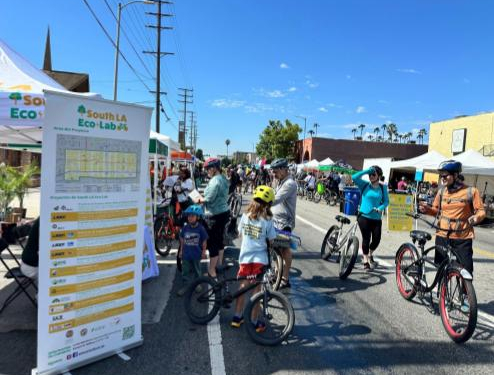November 6, 2025
California communities are impacted by thousands of oil and gas wells that feed the plastic industry
New UCLA report maps plastic’s fossil fuel origins as the state considers infestments and laws to mitigate its impacts
November 6, 2025
New UCLA report maps plastic’s fossil fuel origins as the state considers infestments and laws to mitigate its impacts
Oil well at sunset. Credit: istock / ronniechua
By Colleen Callahan and Dan Coffee
Plastic production and use have increased exponentially, as have the health and environmental impacts. To address this growing problem, California passed Senate Bill 54 to reduce the use of single-use plastics and foodware in the state. The bill also created a $5 billion fund, supported by the plastic industry, to mitigate plastic-related pollution and support disadvantaged, low-income, and rural communities hurt most by the impacts of plastic.
The UCLA Luskin Center for Innovation released a report and policy brief to inform how this law could be implemented by mapping a clear link between fossil fuel infrastructure, plastic production, and vulnerable communities experiencing negative health impacts. It highlights that the state’s work to reduce plastics-related pollution should also consider oil and gas extraction and refining. The report, which builds upon the researchers’ Three-Part Framework for Identifying Plastic-Burdened Communities, finds that wells and refineries are concentrated in low-income communities of color that face other sources of pollution and socioeconomic hardships.
“We found that Californians living near polluting oil and gas sites are much more likely to be Latino or Black, face multiple sources of pollution, and suffer higher risks of cancer, respiratory illness, and reproductive health complications,” said Veronica Herrera, the report’s co-author and a Luskin Center for Innovation-affiliated scholar. “Often, these are low-income communities who may have fewer resources with which to address these compounding issues,” added Herrera, who is an associate professor of urban planning and political science.
The most significant clusters of wells and refineries in California occur in the Bakersfield and Los Angeles regions. Kern County, including Bakersfield, is home to over 70,000 active or idle oil and gas well—a majority of the nearly 100,000 statewide. Los Angeles County is home to 11 of the state’s 21 operating refineries, with a particular concentration in the working-class community of Wilmington adjacent to the Port of Los Angeles. This research comes after the recent Chevron El Segundo refinery explosion.
“Plastics have been pushed on us by Big Oil, and frontline communities are paying the price,” said Dr. Zoe Cunliffe, Environmental Justice Program Manager at Black Women for Wellness, and a member of the Environmental Justice Communities Against Plastics coalition that advised on the UCLA study.
UCLA’s environmental justice-centered framework is intended to go beyond the broad guidelines written into SB 54, providing an in-depth look at where impacts from the entire plastic life cycle fall across the state.
By using data to see which communities bear the brunt of plastic impacts, we have given decision-makers the information they need to target investments where it will do the most good.
Fossil fuels are part of this framework because they provide the raw materials necessary to manufacture plastic. Nearly all plastic (99%) is made from oil and gas, and the size of the plastic industry continues to grow. Under current trends, by 2050, 20% of the world’s oil production will go towards making plastic. Increases in plastic waste and pollution are likely to follow.
The report recommends the following policy actions:
Learn more about this research to inform plastic policy.
Get our latest research in your inbox.
 Local climate champions build a resilient future during tumultuous times
Local climate champions build a resilient future during tumultuous times
UCLA Luskin Center for Innovation reports on Transformative Climate Communities’ accomplishments and personal stories of impact.
 UCLA Luskin Summit 2025: A Vision for Equitable Recovery After the L.A. Fires
UCLA Luskin Summit 2025: A Vision for Equitable Recovery After the L.A. Fires
The UCLA Luskin Summit 2025 brought experts together to explore pathways to equitable and resilient rebuilding in the wake of the LA Fires.
 Welcome to our new staff researcher, Camille Burrus
Welcome to our new staff researcher, Camille Burrus
Meet this member of our Transformative Climate Communities team.

 Phase 1 of Statewide Wastewater Assessment Sets Foundation for Equitable So...
Phase 1 of Statewide Wastewater Assessment Sets Foundation for Equitable So...